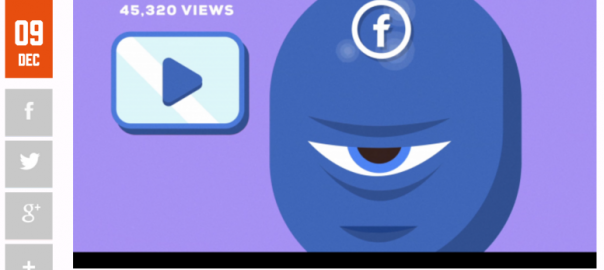There are a lot of great explainer videos being made these days. More than ever before. But, at the same time, there are a lot of not-so-great explainer videos being made (way more than ever before). So to help you avoid winding up with a subpar video, today we’ll examine five common mistakes that many explainer videos make:
1. Length: There’s a common misconception out there that explainer videos “shouldn’t be longer than 90 seconds.” Although it’s probably true that many of the longer explainer videos out there could benefit from a trim, many great explainer videos are multiple minutes in length. Including many of the excellent explainers that we’ve featured as our PICK OF THE WEEK (such as How Facebook is Stealing Views, which runs just over five minutes)
This does not by any means that longer is inherently better, but rather is meant to exemplify this important point: the length of your video should correspond with the complexity of your message and the audience you are trying to reach.
All too often, we’ll see explainer videos are longer than they need to be, or rush through the most important moments to try and make up time. The best way to avoid this is by finalizing a solid script ahead of time and ensuring that it’s not too long or too short: make sure that the length of your video is just right.
2. The Devil is Often in the (Product) Details: One area where explainer videos tend to get needlessly long is with regards to the product details. While it is indeed important to highlight what differentiates your product from others (and how that can benefit the consumer), all too often explainer videos wind up going down a black hole of product features.
Not only does this tactic often risk boring viewers, but it can also turn them away by feeling too “pitchy” to them. Remember: an explainer video should be an informative and entertaining…it shouldn’t feel like an infomercial.
3. Commendable but Not Memorable: Unless you’re using a template (and here’s why you shouldn’t! When It Comes to Explainer Videos, One Size Does Not Fit All), your explainer video is being uniquely crafted to deliver your particular message. So why is it, with this emphasis on customization, that so many explainer videos end up looking and feeling the same?
It’s because the animation provider you’ve selected is doing good (commendable) work, but not providing something distinctly calibrated to fit your company and message. Don’t let that happen. Make sure you select the right animation studio (and provide honest and thoughtful feedback), so that you’ll under up with an explainer video that will stand out from the crowd.
4. Off-Brand: One easy and important way to ensure that your video feels like your video is by incorporating the visual elements and brand identity of your company. You don’t need to go overboard here, but make sure to at least discuss with your animation provider so that you end up with something that looks triumphantly at home on your homepage.
This may not seem extremely important, but consider the following: if your explainer video looks off-brand, visitors might even mistake it for an advertisement. Which is the last thing you want from what should be your best foot forward.
5. Tone Deaf: Being off-brand is problematic, but being off-tone can be fatal. We’ve all heard this expression before: it’s not what you say, but how you say it. The tone of your explainer video is that how. It’s the filter through which viewers will access your message and, ideally, be driven to action,
One of the reasons why errors in tone are such a common mistake is because it’s not tangible in the same way as, say, character design or a call to action. But just because it’s less tangible, doesn’t mean that you should just sit back and hope for the best. There are ingredients that you must examine individually and then consider how they interact.
In particular, pay attention to the opening lines of your script. Not just what you’re saying with this words, but what does the diction and syntax say about you? Is this casual or serious? Should it be that way? What kind of expectations has this opening set for your story (and what kind of storyteller will viewers believe to be telling it to them)?
Digital & Social Articles on Business 2 Community(55)




